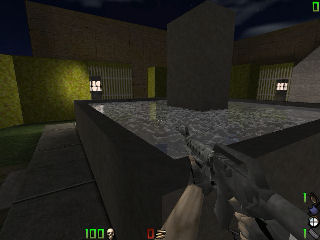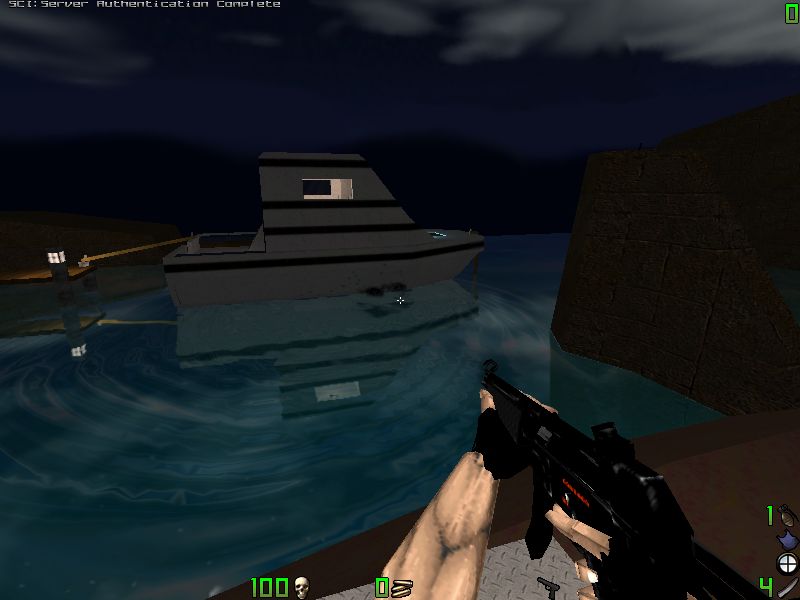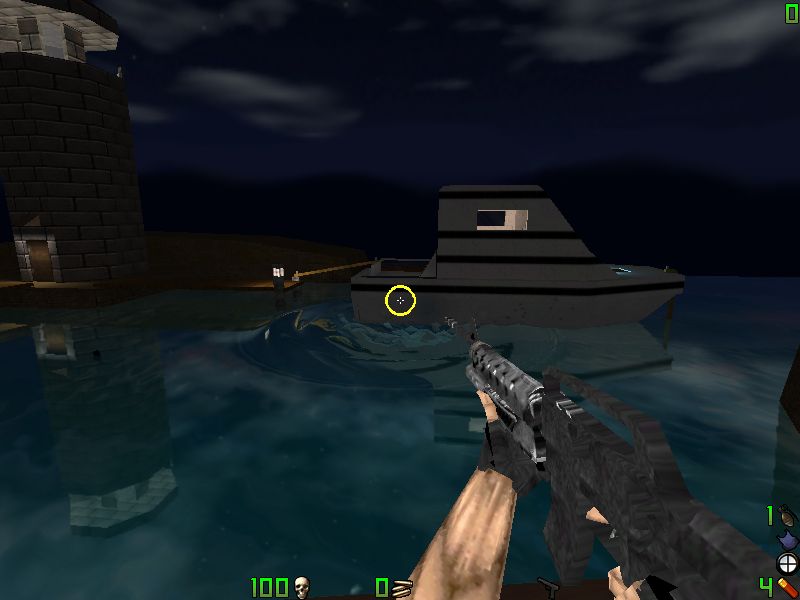This one triggered a great deal of interest in LTKTBM, and, to be honest I
cant say I'm too surprised, its good stuff.

This is the first captured image of the advanced water surfaces in game. You
can download a short
video clip of it in action.
After proving that interactive water surfaces are a big thing thats missing,
further work went into integrating it further into the game, and developing
the system that will actually handle transforming the original quake2 water
surfaces into a true water system, instead of the hard-coded square surface
thats shown above.
The next step was to check the base performance in game, modelling water is
renowned for being positively processor hungry, whilst the above implimentation
showed it to work, it was no guarantee that it wouldn't cripple performance
when handling larger surfaces or even just when the AI system kicked in and
lots of things were happening at once. the next stage was to code it into a
couple of maps and have a play.
Which brings me up to the latest set of images.
 

And of course a video
of it in action.
Hopefully, if you've read this far, you're wondering where on
earth can you download it from? Well, the sad truth is you can't. This, as with
the skeletal/ragdol
physics system are proof of concept systems. There is still a long way to
go before I'm anywhere near something that can be considered playable, even
if a 'tech demo' release could be put together in a comparitively shorter time.
For now, your best bet of getting hold of it anytime within the next few years
is to give me the time to work on it. I'll leave it up to you for how best you
can do this.
Some developer info:
code: C++
Description: Fluid system that takes a Quake 2 (water) surface
as an input, and generates water system objects based upon its dimensions. Dynamically
linking surfaces that touch. => directly replaces Q2 water, with no developer
input required for implimentation on any maps to utilise the water. (the big
part that remains to be finished).
On top of this, much developement work is required on profiling
the system it is running on, the code itself is not graphics card dependant,
but performance is not liner to detail, and for now an incorrect detail setting
results in unpredictable performance (to high and framerates drop to nothing,
to low and it behaves more like an elastic surface).
The next step is to bring the code into the latest version of
the engine, and add a slidebar to set the detail level. Then take user input
on the performance on various machines, and the detail level it is set to. After
that will come making the code to auto set the detail level for changing system
performance, and then bringing in and final testing of the code to take dimension
settings from the Q2 water surfaces.
The actual progress of the developement of this system depends
very much on what happens over the next few months, whilst I am not adverse
to taking other developers input, I am still undecided as to whether to open
this up for a real group project (which I conceed it probably deserves). The
logistics of which are far from simple.
Credits:
code auther: Mark 'mSparks' Parker
reflective water surfaces from code by dukey on the quakesrc.org
forums.. | 